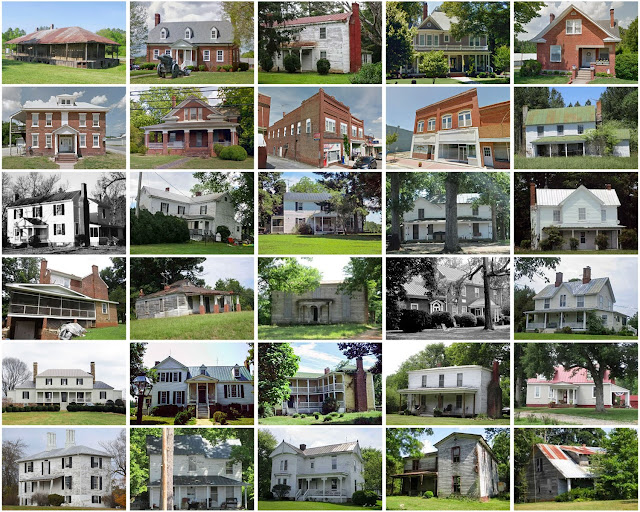Lunenburg County, Virginia
Founding: 1746
Parent county: Brunswick
Namesake: Lüneburg, Germany
Seat: Lunenburg (1784–)
Seat: Lunenburg (1784–)
Land area: 432 square miles
Population (2020): 11,936Population (historic): 8,959 (1790); 11,055 (1840); 10,403 (1870); 11,705 (1900); 14,058 (1930)
Periods of population growth: pre-1790–1810; 1820s; 1840–1860; 1870s; 1890–1920; 1940s; 1970s; 1990s
Subdivisions: Two towns; one CDP
Pre-1940 residences (estimated): 589 (9.8%)
Pre-1940 housing survival rate: 27.5%
Pre-1860 housing survival rate (1940): 20.3%
Pre-1940 housing survival rate: 27.5%
Pre-1860 housing survival rate (1940): 20.3%
Farm housing in disrepair (1950): 30.6%
Nonfarm housing in disrepair (1950): 19.9%
Average farmhouse value (1930): $807
Average outbuilding value (1930): $433
Average farmhouse size (1940): 5 rooms
Number of farms (1920): 2,108
Average farm size (1920): 36.1 acres
_________________________________________________________________________________
Average farmhouse value (1930): $807
Average outbuilding value (1930): $433
Average farmhouse size (1940): 5 rooms
Number of farms (1920): 2,108
Average farm size (1920): 36.1 acres
_________________________________________________________________________________
Lunenburg
Namesake: Lunenburg County
Founding: circa 1784 (founding as Lewiston); 1798 (post office); 1816 (incorporation)
Population (2020): 142
_________________________________________________________________________________
View and filter the data. Or see a map.
View and filter the data. Or see a map.


Comments
Post a Comment